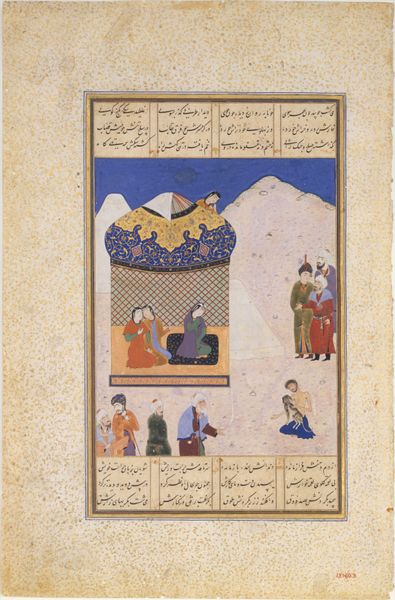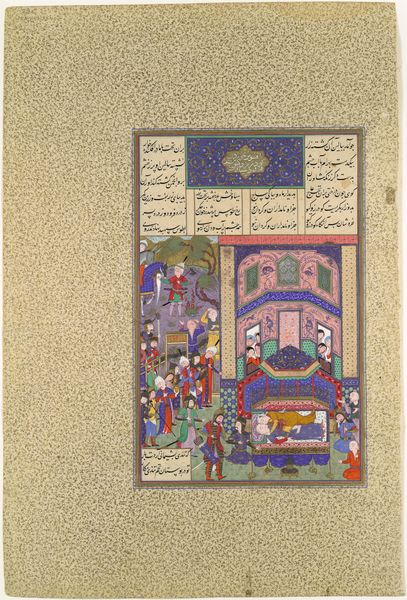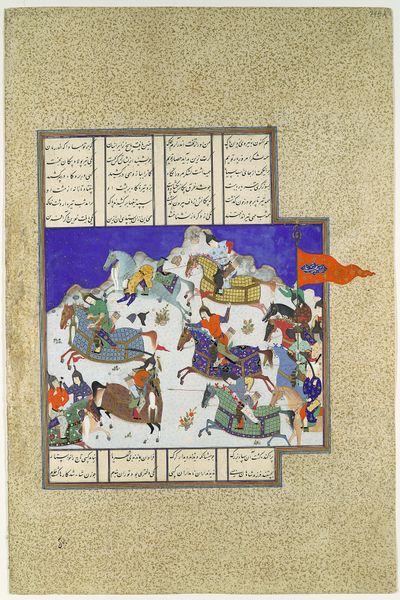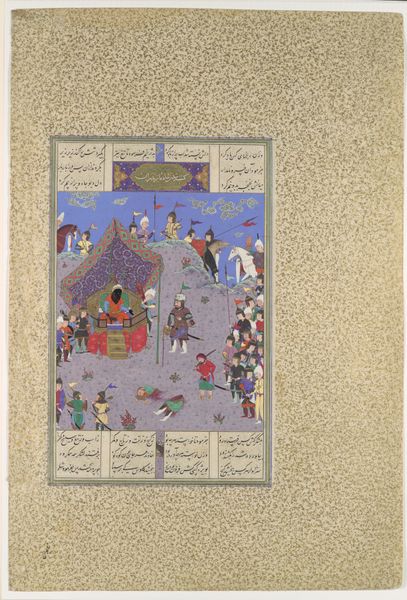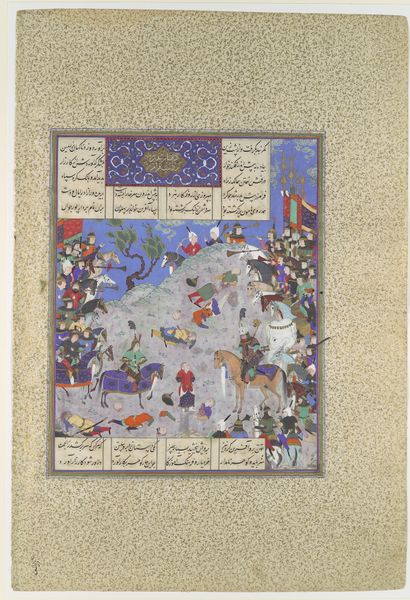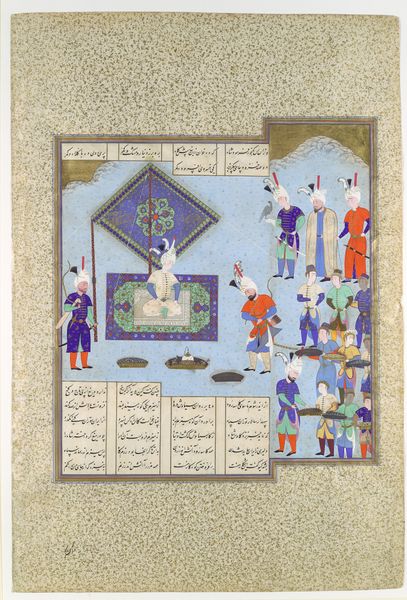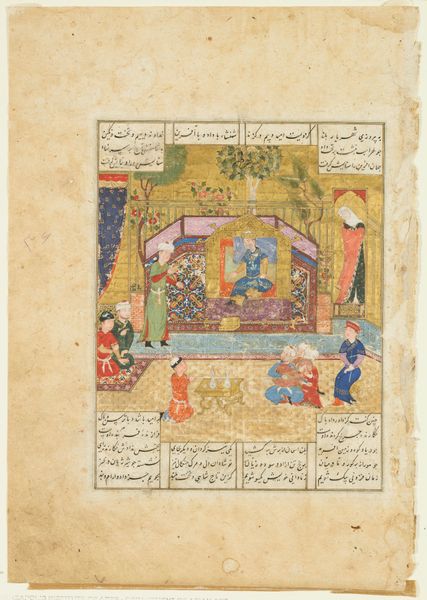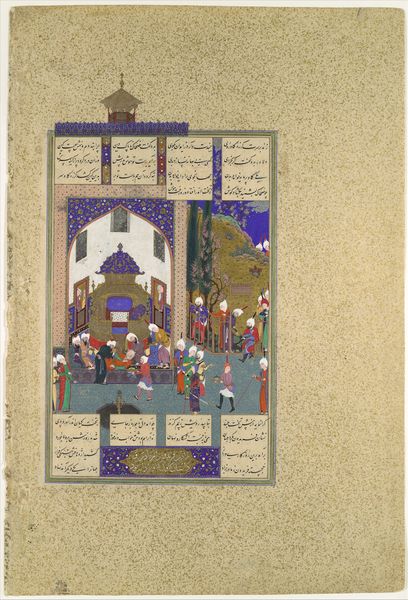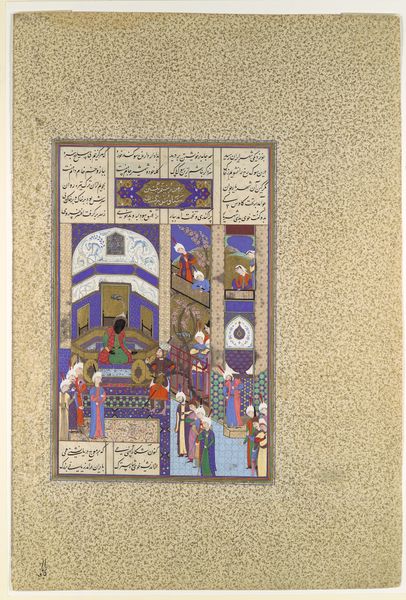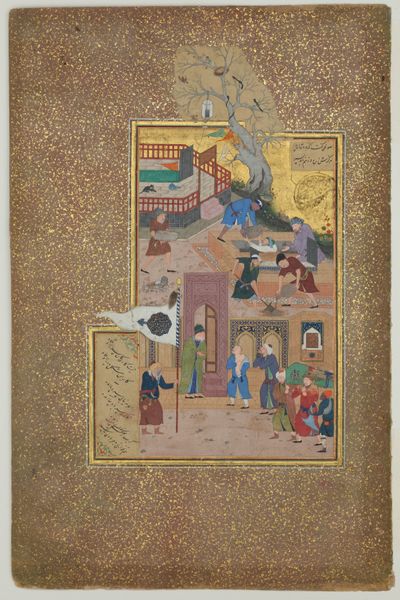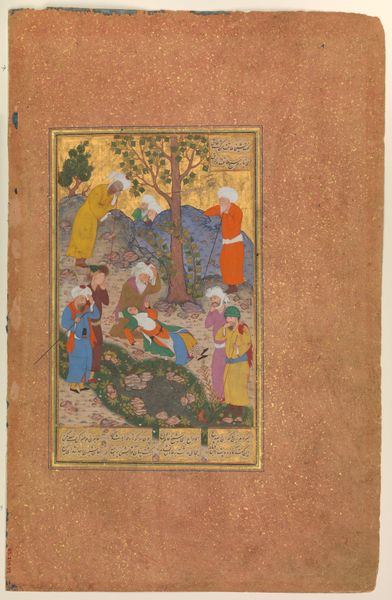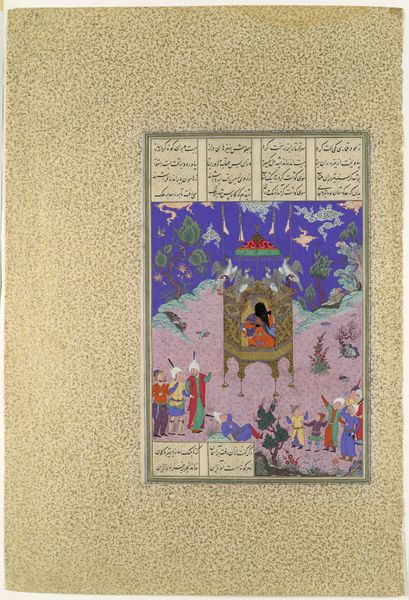
"Gushtasp Proves His Archery before Caesar," Folio 404r from the Shahnama (Book of Kings) of Shah Tahmasp 1500 - 1555
0:00
0:00
painting, watercolor
#
water colours
#
painting
#
landscape
#
figuration
#
watercolor
#
coloured pencil
#
horse
#
men
#
islamic-art
#
miniature
Dimensions: Painting: H. 10 5/8 in. (27 cm) W. 8 9/16 in. (21.7 cm) Entire Page: H. 18 11/16 in. (47.5 cm) W. 12 5/8 in. (32.1 cm)
Copyright: Public Domain
Editor: Here we have "Gushtasp Proves His Archery before Caesar," a watercolor painting dating from 1500 to 1555, inspired by the Shahnameh. The arrangement of the figures, with Caesar enthroned at the top and the archer below, feels very deliberate. What do you see in the composition that stands out to you? Curator: The composition's striking feature is the strategic arrangement of forms within a deliberately flattened pictorial space. Note how the figures, each rendered with meticulous detail, are deployed in tiers, emphasizing spatial organization over naturalistic perspective. The calligraphic text also is of primary importance in assessing the function of this work. Observe how the painted elements operate alongside it, creating a semiotic interplay between word and image, with the picture serving to augment or perhaps even undermine, the text's narrative authority. Editor: That's fascinating, I hadn't considered the relationship between text and image beyond simple illustration. Does the style of dress or the landscape contribute to this formal interplay? Curator: Precisely. The figures are adorned in garments exhibiting an almost geometrical abstraction, their colors intentionally harmonizing and contrasting within the frame to amplify the composition's underlying structure. The background landscape—a tapestry of muted hues—serves as a structural counterpoint, enhancing the figures. Consider how each element's materiality contributes to the painting's surface, establishing a haptic quality that is distinct to the era in which it was created. The artist's intention in this piece is to create formal and conceptual unity using structural harmony between its composite elements. Editor: So it is more about the interplay of all these elements rather than just the narrative. It’s been illuminating to view it this way, focusing on these compositional features! Curator: Indeed, it’s through analyzing form, color, and surface texture that we begin to unlock meaning in this, and any artwork.
Comments
No comments
Be the first to comment and join the conversation on the ultimate creative platform.
